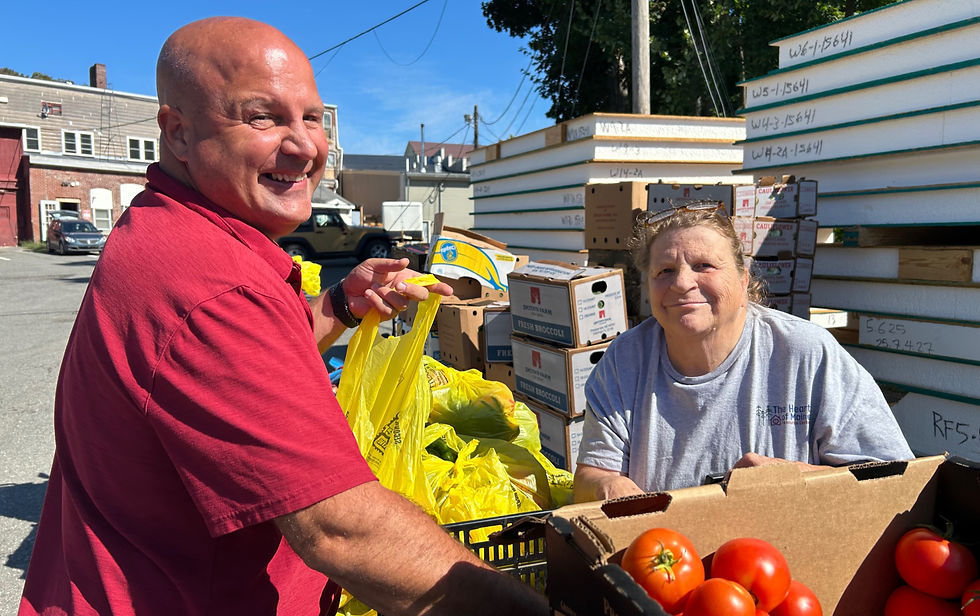Beyond the Grocery Aisle: The Real Impact of SNAP in Maine
- Laura Gordon
- 27 minutes ago
- 3 min read
The role of SNAP quietly underpins financial stability for many families in our region. It’s more than a safety net: it’s part of the infrastructure that helps families and communities thrive— and it complements the work we do here at HMRC every month.
A Brief History of SNAP

The roots of SNAP reach back to the 1930s, when surplus agricultural products and widespread economic hardship intersected during the Great Depression. In 1939 the first food-stamp program was launched at the Federal level as a way to distribute surplus food and assist families. Fast-forward to the early 1960s: pilot food-stamp programs were underway across multiple states. In 1964, the Food Stamp Act of 1964 (Public Law 88-525) made the program permanent, with a dual goal: strengthen the agricultural economy, and provide improved nutrition among households facing financial strain.
In the ‘70s the program expanded nationwide, and over the decades it evolved — moving away from stamps to electronic benefits, refining eligibility and benefit levels, and adapting to economic shifts and cost of living. In 2008 the official name changed to “Supplemental Nutrition Assistance Program” (SNAP), reflecting its broader role in supporting nutritional access and stability.
SNAP in Maine Today
In our state, SNAP is a key resource. In FY 2024, an average of approximately 172,200 Mainers received SNAP benefits each month — about 12.3 % of the state population. More than half of participating households include someone who is older or has a disability; more than 50 % of participants are in families with children. On the economic side: every dollar of SNAP benefit issued is estimated to generate about $1.54 in local economic activity in Maine. In rural areas like the Maine Highlands, where long distances and limited grocery options increase household costs, SNAP plays an especially important role.
Why SNAP is Important
At first glance, SNAP helps households afford food — and that in itself is important. But when we step back, we see several broader benefits:
Nutrition & dignity: Access to the right kinds of food supports children’s growth, older adults’ health, and enables households to invest in other parts of life (job training, education, home repairs) because they’re not constantly scrambling for groceries.
Community well-being: Families choosing their groceries, planning meals, making food traditions part of their lives — that builds connection, culture, and resiliency.
Short-term support that prevents long-term crises: When families can reliably budget for food, they’re less likely to face crisis-level hardships like skipped meals, medical complications, or emergency financial strain.
Local economy uplift: SNAP benefits flow into Maine grocery stores, local farmers, distributors, truckers, and local retail. That ripple effect means supporting households through SNAP is also investing in the economic health of towns like Dexter and the broader Maine Highlands.
Complement to our work at HMRC: With SNAP helping cover ongoing grocery needs, monthly food distributions at HMRC can complement the work of SNAP, filling in the remaining gaps it does not cover.
An Example Story
Picture a family in the Dexter area: a working single parent with two children. SNAP helps them cover the groceries each month — fresh vegetables, meat, pasta, milk, bread, and more. With that baseline secured, the parent is able to focus energy on working to pay the other bills and the kids stay connected at school and their other activities. Meanwhile, the family’s grocery spending supports the local store, which in turn purchases produce from Maine farms and keeps a local delivery driver employed. SNAP is quietly woven through all of it.
In Closing
SNAP is far more than a food assistance program: it’s part of a network that supports nutrition, dignity, local economy, and community stability. For HMRC, our mission to build a resilient, connected community in the Maine Highlands is strengthened when neighbors have access to such resources. As we move forward — especially as we prepare to open our client-choice food center — it matters that we view SNAP not just as “help” but as a shared investment in our collective wellbeing.




Comments